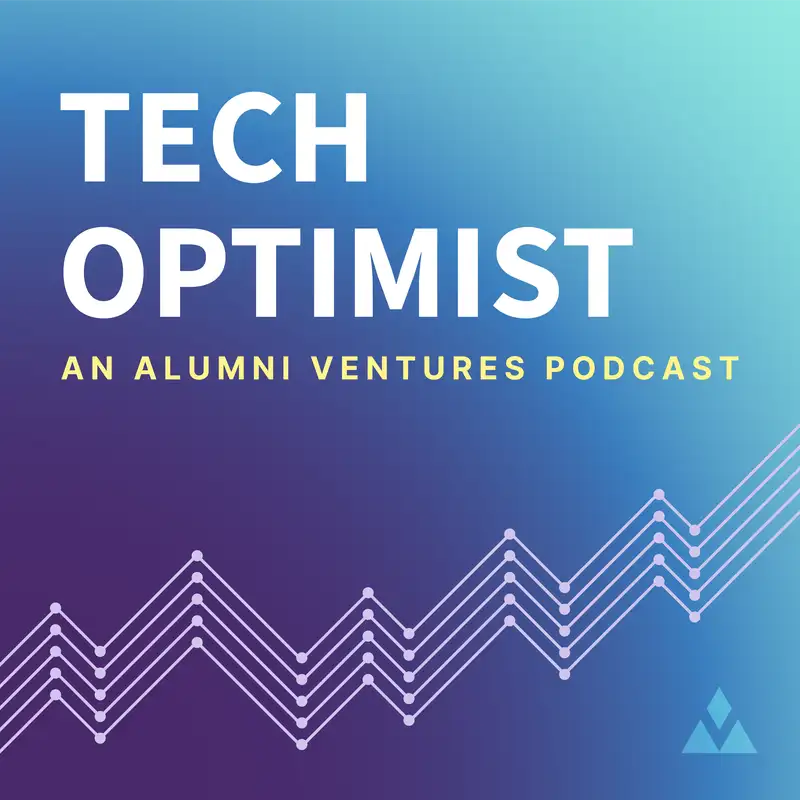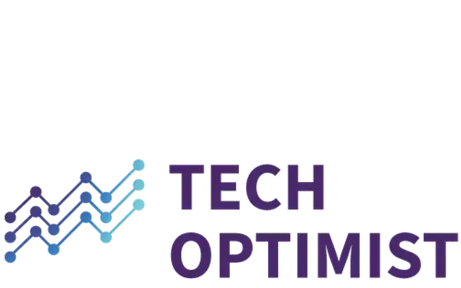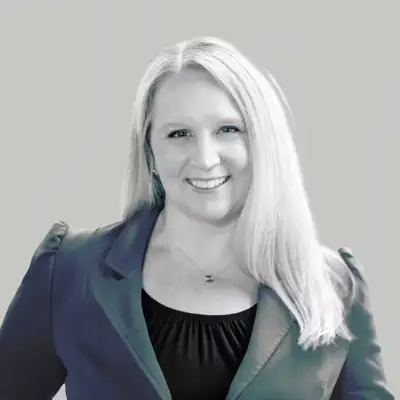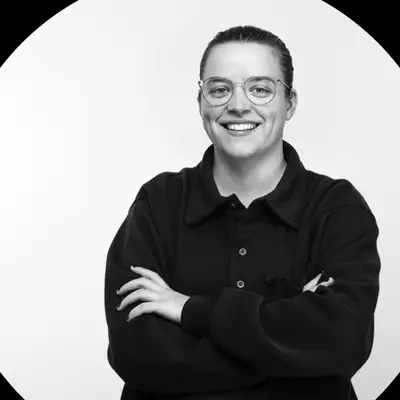#96 - Meet the Startup Optimizing Telemetry Data for a More Efficient Future
Sam:
What if I told you that the cost of data is breaking the bank for engineering firms, or that solving this problem might just transform how companies manage the growing flood of telemetry data. Welcome to the Tech Optimist, where today we're taking you inside the story of Sawmills, a startup that's revolutionizing telemetry management. In this episode, we're going to sit down with Ronit Belson, co-founder and CEO at Sawmills to explore the challenges and observability data, why current solutions are unsustainable, and how their smart telemetry platform is helping teams cut costs while boosting data quality.
It's a fascinating dive into the intersection of AI, engineering efficiency, and a rapidly evolving tech space. We're going to pause here for a quick word from our sponsors, and a reminder about our disclosure.
Ad:
Do you have a venture capital portfolio of cutting-edge startups? Without one, you could be missing out on enormous value creation and a more diversified personal portfolio. Alumni Ventures, ranked a top 20 VC firm by CB Insights, is the leading VC firm for individual investors. Believe in investing in innovation? Visit AV.VC/foundation to get started.
Sam:
As a reminder, the Tech Optimist podcast is for the informational purposes only. It's not personalized advice, and it's not an offer to buy or sell securities for additional important details. Please see the text description accompanying this episode.
Telemetry data, it's the backbone of modern engineering teams, but it's also becoming a massive unsustainable headache. As systems generate more observability data than ever, teams are struggling to keep up with the skyrocketing storage costs, irrelevant data, and overwhelmed tools. The problem isn't just too much data, it's that we're collecting everything even when only a fraction of it is actually actionable. The result, wasted resources, distracted engineers and insights buried in the noise.
This is where Sawmills steps in. Their smart telemetry platform doesn't just manage this flood of data, it redefines how teams handle it. Reducing waste while keeping what matters most. This isn't just a solution. It's a rethinking of the entire approach of observability. So let's dive into how they're making telemetry smarter, cheaper, and even more impactful.
Ronit Belson:
And we kept hearing the same thing time after time after time. When we got to the somewhere between 10 to 20 person we talked to and we heard exactly the same thing. We stopped and we said, listen, the market is telling us something. These people are telling us something. Let's listen.
Speaker 1:
Joining us today is someone who truly embodies innovation and leadership in this crazy changing tech world, Ronit Belson, co-founder and CEO at Sawmills, an AI-powered software company revolutionizing telemetry data management. With over two decades of experience scaling startups and driving growth, Ronit has built a reputation as a dynamic leader in the B2B technology.
Throughout her career, Ronit has held key leadership positions, including COO at Testim.io, Rollout.io, and Cloudmeter companies that were successfully acquired by industry leaders like Tricentis, CloudBees and Splunk. And she's no stranger to taking startups from vision to reality. Her educational foundation is equally impressive with a BA in economics and Japanese from the Hebrew University and an MBA from the University of Rochester's Simon School of Business. At Sawmills Ronit is leading the charge in AI-driven solutions to help engineering teams streamline data management and cut costs. She's also a champion of partnerships emphasizing the power of aligning mutual goals to drive success. So we're excited to drive into her journey a bit more. The story of Sawmills and her vision for the future of telemetry and AI.
Ronit Belson:
What they told us was so clear, the amount of money today we pay our observability solution is not sustainable. We love our observability mostly, but we can't use it as effectively as we want. It's just too expensive. We figured out the root cause of the problem. We knew there was a problem now we needed to figure out the root cause of the problem. And the third thing we had to do is come up with a solution to the problem, and that's what we've done.
Wesley Yiu:
Observability, obviously, is a very big space. In the last decade companies have been formed or even evolved over the years, multi-billion dollars in market cap all of them are public today.
Speaker 1:
And then joining us today as our Alumni Ventures host is Wesley Yiu, not a stranger to this show, a seasonal investor and one of the sharpest minds in venture capital. Wesley is a partner at Alumni Ventures where he spent years helping early-stage startups turn bold ideas into thriving businesses. With a strong foundation in technology and finance, Wesley brings a wealth of experience to this table. From his early days at Goldman Sachs to his leadership at Triphammer Ventures, Wesley has built a reputation for identifying groundbreaking companies across sectors like AI, SaaS, and IoT. As someone deeply connected into the Cornell Alumni Network excels at finding the innovators and disruptors that are shaping our future.
So telemetry data is the unsung hero of engineering teams, but it's also the biggest pain point. In this opening segment, we're going to explore how data overload, rising costs and inefficiencies and observability have created a massive challenge for teams worldwide. This is the foundation for why today's guest, Ronit Belson, and her company, Sawmills, are tackling this issue head on.
Wesley Yiu:
So why don't we kind of jump into what Sawmills is all about. Maybe first starting off with what was the motivation for the team to build this company in the first place?
Ronit Belson:
So we actually started, when we did ideation, we went through a lot of ideas, et cetera, eventually we settled on an idea that we thought was good and the market needs, and it was around code instrumentations. I won't bore you with it because we didn't go... So we started to meet with VPs of engineering, CTOs, head of DevOps, because we knew that's the market that has a lot of challenges and we want to tackle. We started meet with them, but we're the first one. They tells us, "Great, really interesting, not my biggest problem." "What's your biggest problem?" "How much I'm paying today for my observability?" Okay, great. That's the number one problem, that's nice. Went and talked to the second one, heard exactly the same thing. We pitched one thing, they say, "It's not our biggest problem, biggest problem is cost."
So we said, okay, let's dive a little bit deeper and understand what's going on there. And what was really clear is that almost all observability solutions, their pricing are related to the amount of data that is sent to the observability solution. This data is called telemetry data. Comes in the forms of logs, metrics and traces. And that data grew quite significantly in the last, I don't know, 5 to 10 years. It grows 35% year over year according to New Relic article or research.
And then when we went on to talk to people, they also said, "You know what? We send a lot of information." But when you ask them how much of that information do you feel like you actually need? The answer really surprised us. It was somewhere between 10% to 40% did they say that they actually need, and it was more towards the 10% than the 40%. So if you combine the two, you have a big issue around cost, data grows rapidly from your year over year, and a lot of the data that you send today is practically junk, you don't need it. Okay. Somebody needs to... It obviously means that you don't have control over your telemetry data and there is a great opportunity to help you there.
Speaker 1:
All right. Let's pump these breaks a little bit. Let's take a moment to break down telemetry data and observability, the two key terms in today's conversation. So we're going to hear them a lot, you have heard them a lot already. But telemetry data is the information that systems collect about their performance and behavior. So think of it kind of as a health tracker for software, kind of like an Apple Watch or something like that. It monitors things like response times, errors and resource usage, like memory or CPU. And this data helps engineers understand what's working and what's not. And observability is the ability to use that telemetry data to figure out what's happening inside these complex systems. It's like having a doctor analyze your health tracker to diagnose issues and improve your overall performance.
Observability focuses on collecting three core types of data, which Ronit kind of talked about a little bit earlier. Metrics, which are numbers like response time or error rates. Logs, which are detailed event records for troubleshooting. And traces, a step-by-step view of how data flows through the system. So together telemetry and observability help teams catch problems early, improve reliability, and keep everything running smoothly.
Okay. Now that we're up to speed, let's hop back in.
Wesley Yiu:
You talked about costs as being one of the chief concerns of the profiles of personas that you talked to in this space. So how do you kind of see the observability data space evolving in the future, especially as you build Sawmills today?
Ronit Belson:
Right. I think that what we do is going to become a category, and that's the telemetry management category. And I know that there are other startups that are tackling that. It's exactly like you have it on the BI side where you have platforms that help you manage data. The same is going to happen on the observability space. So from one end, there are going to be companies that will eventually, there'll be a winner, but there'll be more than one company that's going to be the telemetry management platform. Hopefully it will be us.
On the observability itself and let's look at observability as almost like a BI solution for telemetry data. So that's company like Datadog and New Relic and Dynatrace and Splunk, et cetera. These companies, I see them... If you ask me how these companies are going to change, not the telemetry management space, I think AI is going to increase, it's going to take front and center for these companies. And I believe it will be mostly around help us get to the root cause of the problem faster. Because today doing that is really difficult, so I think that will be part. Another part of AI will be around help us create reports and dashboards faster, because today it's pretty difficult to do.
So let me give you a shorter answer. On one end, I believe that the telemetry management category will become a category by itself, and it's going to grow quite rapidly because by the way, it's not only about cost, it's about the ability to allow you to control the data. It releases you from vendor locking. It allows you to make sure your data is of a better quality and it allows you to reduce the cost and not send everything to your observability solution. So that will grow as a category by itself. And on the observability side, I think, as I said, AI is going to be front and center. It's going to help you with better root cause analysis and a better and simpler way to put together your reports and your dashboards.
Wesley Yiu:
Got it. And have you been working closely or having dialogues with a lot of the observability players that exist today?
Ronit Belson:
We are very new, we didn't talk about... We closed our funding in April of this year, oh, actually last year, 2024. And since then we've been just build a product together with design partners. But we did start having conversation. We were approached by a few of the large observability providers. So we have some first conversations, but our main focus today is just building the product. Moving on, later, I'm sure we'll have relationships with him.
Wesley Yiu:
So how would you say that your background is kind of a multi-time executive or founder, has impacted your ability to build Sawmills today?
Ronit Belson:
As you go through your career there is one thing that everybody gets and that's experience. And the experience is with the good, the bad, the ugly, the great, and what you do, what I do at least at this point, what I feel and I feel it very strongly almost every day, is that it is kind of a culmination of everything that I learned throughout the years, throughout my experience. Starting companies, working for startup companies, growing companies, has its great sides, but also has its challenges. So I feel like I'm able to take everything that I learned and try and use it now.
Wesley Yiu:
Excellent. So we understand that building companies is not easy process by any means, and it's often no single individual can achieve success on their own. So you've picked for this journey at Sawmills, two great co-founders, curious on why you chose them, what they bring to the table, how they complement your core skillset here.
Ronit Belson:
Sure. You're absolutely right. And choosing co-founders, I would say, is the most important thing that you do when you start a company. And then the second one, who do you choose as your investors? But the number one is who do you choose as your partners for the journey? I have two co-founders. One is our Chief Product Officer, Erez, and the other one is our CTO, Amir.
So, I'll tell you a little bit about them in a second. But if you think of what you need, the expertise that you need when you start a company, you need somebody on the technical side, you need somebody on the product side and you need somebody on the go-to-market side. We cover all three. The three of us come from dev tools, dev opt tools, background, et cetera. So we have the founders market fit, but we also cover the main three areas that you need when you have a company. So that's on a very high level.
On the specific, Erez and I actually worked together before. In fact, Erez was my manager at Rollout. He was the CEO, he was the co-founder and I was their COO. We really enjoyed working together. And when Rollout was acquired, he went to CloudBees. I decided I didn't want to, and I joined Testim. We always said, we want to work again together sometime. So when the time came and I decided to leave Tricentis, he decided to leave CloudBees, we said, okay, it's the time. That's what we want to do now. So we joined forces. This time we decided that I'll take the CEO role, he'll take the product role, but we are partners.
We knew that what we are missing is the technical aspect. And so we went on a journey to find one. We were lucky enough to be introduced to Amir. Amir at the time was VP of engineering at New Relic, in charge of their AIOps. We met with him and there was an immediate click. We understood he was the guy. We didn't know if we managed to convince him, but I think he saw what we saw, which was the huge opportunity to work together. At the time we didn't have an idea yet. We were in the ideation space. But the opportunity of three people that bring to the table a lot of experience, each one with their own expertise and a really good click and he joined us. So that's how we formed as a team.
Speaker 1:
All right. Now we're going to take a few seconds for an ad. Hang in there. Don't go anywhere.
Speaker 2:
Exceptional value creation comes from solving hard things. Alumni Ventures' Deep Tech Fund is a portfolio of 20 to 30 ventures run by exceptional teams who are tackling huge opportunities in AI, space, energy, transportation, cybersecurity, and more. These game-changing ventures have strong lead venture investors and practical approaches to creating shareholder value. If you are interested in investing in the future of deep tech, visit AV.VC/deeptech to learn more.
Wesley Yiu:
So you're just coming out of stealth with our podcast here, you'll have kind of a broader announcement that people get see as well. Is there anything you can share, kind of tease out what Sawmills is all about, what you guys are focused on in the near term here and kind of the path forward for the business?
Ronit Belson:
Sure. So as I said, I kind of hinted or said, we are in the telemetry management space. What we do is actually smart telemetry management platform, this is what we are building. It's a platform that allows companies to get the most out of their telemetry data at petabyte of scale and fraction of the cost. Again, we are not the observability solution. We are the telemetry, the smart telemetry management platform. So we sit between the data producers, this could be your applications, your infrastructure, the telemetry data producers, your applications, your infrastructure, whatever is sending the telemetry data to the observability solutions. So we sit between that and the destinations, so these are called the sources. We sit between the sources and the destinations. The destinations are the observability solutions, we sit in the middle. We're able to understand the data and then allow you a, in a very easy way to control that data.
But we don't stop there. We also provide you with an understanding of what part of that data do you really need in the form that it is, and give you recommendation as to what you can do with the data in order to, A, reduce your cost and, B, improve the quality of your data. So I'll give you an example. If we figure out... And I'll start with things that are simple and I'll go towards things that are more complicated. As the data goes through us, we can identify that you have debug data, debug logs, that you send to your production observability solution. This is things that typically are very verbose, very verbose logs that you do not need in your operational dashboards, in your observability.
So as we see, you can tell different actions in the data. We can come with a recommendation to drop it. We can come with a recommendation to route it to an S3 or something else. Or if you have log lines, you have a lot of log lines, we can come with a recommendation that can impact cost on some of the observability solutions. We can come with a recommendation and an action by the way that you can get with a click to summarize these logs. So there are a lot of actions that you can take on the data as it flows and as you understand it, that will impact the cost and the quality of your data. If that made sense.
Wesley Yiu:
Absolutely. Look, I'm personally excited. This is a space that, in my belief, that you're kind of creating this new category alongside a space that has done very well over the last decade and a half or so. Again, lots of money flowing into this space and with the proliferation of AI going forward, just tons and tons of data that continues to grow every single day. So I'm super excited about the path forward here.
But maybe from your perspective, what is the most excited or what should people be most excited about Sawmills as you build in this space?
Ronit Belson:
I think, so the way I view it, the number one burning issue today is cost. We talked quite a lot about cost. We mentioned how by understanding the data, we can come with recommendations and then one click actions in that context of how to reduce costs after you know what it is that you can do with the data. But it doesn't stop there. When you really understand the data and have the ability to take simple actions on that data, you can do much more with it. You can enrich the data to make the effectiveness of your observability higher. You can make sure that your logs are all standardized so it's much easier to do root cause analysis when it gets into your observability solution.
So I believe that when we give our customers the ability to control the data, to understand the data and control the data before it leaves their assistance instance, it allows them to do much more with that data. But from one end, we can reduce the [inaudible 00:22:49], but on another end you can make sure that the data, when it gets into your observability solution, allows you to do much more with your observability solution than you are doing today.
Wesley Yiu:
Maybe last question for you, what's coming next? What do you see as the long-term vision for the business? I know it's early here, but what are you planning for the next year, next two years or so?
Ronit Belson:
Sure. So the beginning is we are very focused on observability. We are growing our numbers of integrations, of course, this is something that we are going to continue doing, but we invest quite a lot and we are going to continue to invest quite a lot in the smart part of the observability, as I mentioned. That means, again, it's the ability to understand the data, to come with recommendations that are as effective as possible and then allow you in a really simple way, in context of what we identified as the problem or as the opportunity to take action.
There is one thing that we didn't discuss, which I think is quite important. What is unique about the situations DevOps are facing? So DevOps teams are the teams that are typically in charge of the observability solution. They're also the ones that carry the bill. But they're also in charge to make sure that engineers have an effective observability solution that they can use. Where is the problem, they're in charge, but they're not the ones who create the problem. The problem is typically created by the developers who are the ones who create the telemetry data.
What's unique about developers? They don't care about it that much. They care about writing features. So you have here a problem where from one end you have one group that creates the challenges and another group that is in charge of the outcome of the challenges. What a solution, what a smart telemetry data management product does, it allows DevOps to provide developers with a really simple way to take an action, whereas today they have to chase them. This is something that is very important to understand. I know it's probably not related to the question you asked, but it's something that's really, really important to understand and know about that specific challenge that DevOps are facing. But I don't remember, what was your question? And I don't know how I got there. So remind me, what was your question?
Wesley Yiu:
Just the evolution that you have in your head as to where Sawmills [inaudible 00:25:51] from here?
Ronit Belson:
Correct. So that's why I told you that part of the story, because the smart part takes a big part here in order to make it effective. So to make the DevOps and the engineers work together to solve that problem that I described before, too much data being sent into observability, it's not good quality data, it's not consistent, et cetera. You need a solution that will be as smart as possible and will allow DevOps to make developers actually help fix the challenges that are being created. So we are investing a lot in that smart part of the conversation.
Wesley Yiu:
Excellent. Well, that wraps it up for me. Ronit, I appreciate you spending time with us to sort of walk through the story of Sawmills. I know it's early here, but we're super excited. You just came out of stealth. I can't wait to see what's in store for the company from here on out.
For folks listening to Tech Optimist podcast today, appreciate you guys making time to join us today. If you're in engineering or DevOps, definitely check out Sawmills and we can't wait to see what's in store for them next.
Speaker 1:
Thanks again for tuning into the Tech Optimist. If you enjoyed this episode, we'd really appreciate it if you'd give us a rating on whichever podcast app you're using and remember to subscribe to Keep up with each episode. The Tech Optimist welcomes any questions, comments, or segment suggestions. So please email us at info@techoptimist.vc with any of those and be sure to visit our website at AV.VC. As always, keep building.







